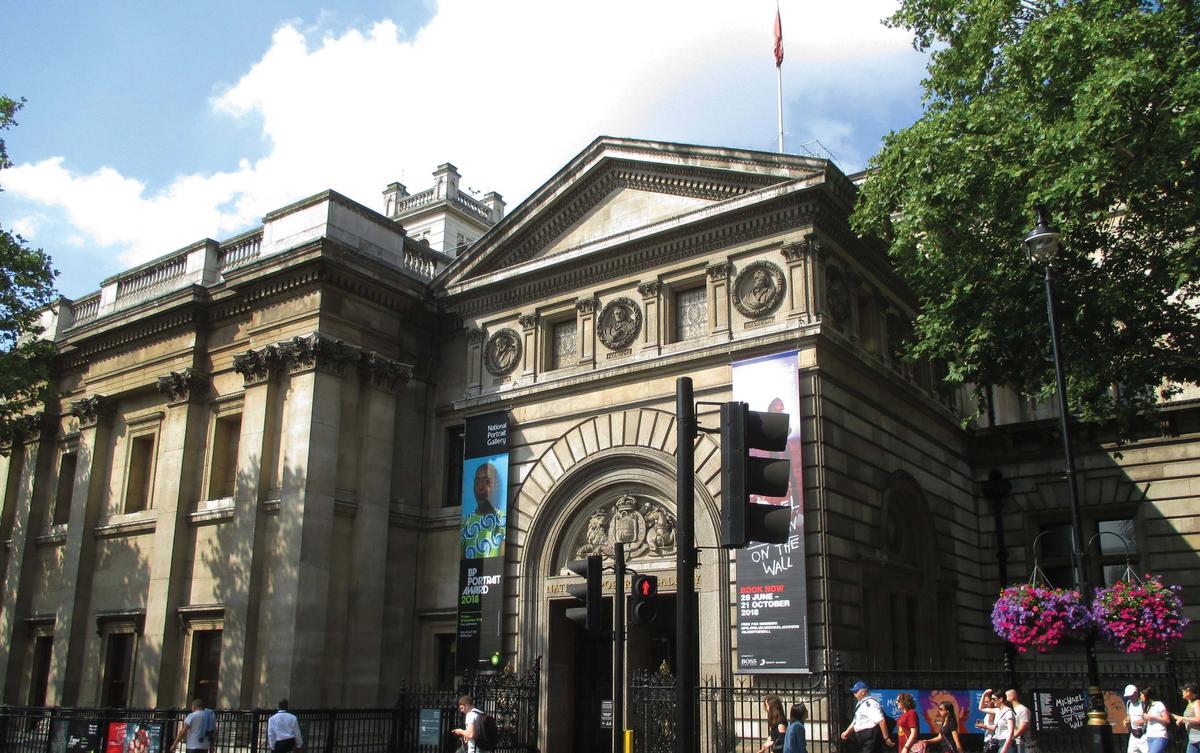The debacle around the counting of the National Portrait Gallery’s visitors means that the institution’s attendance figures are not as dire as first thought. But the gallery’s exhibition figures for last year and the first part of 2018—which are not in dispute, because they are ticketed and thus use a different system—will no doubt give the gallery pause for thought, because its contemporary exhibitions have been poorly attended.
Multiple factors were clearly behind the jump in visitors to the National Portrait Gallery (NPG) in this millennium, from 1.27 million in 2001 to 2.15 million in 2015, but key to the rise was a dynamic contemporary exhibition programme. The NPG’s exhibitions reflected the gallery’s embrace of the shifting nature of portraiture. It was founded in 1856 to gather those “commemorated in British history as warriors or as statesmen or in arts, in literature or in science”, as the founding member Earl Stanhope put it. In the mid-19th century, the academic hierarchy of genres, in which portraiture was second to history painting but above genre painting, landscape and still life, still had some relevance, but that was shattered by modernity. Meanwhile, photography grew increasingly widespread as a means of achieving likeness and commemorating the great and the good. The museum gradually incorporated these developments so that its mission today is, among other things, “to promote the appreciation and understanding of portraiture in all media”. Only since 1969 has it collected living sitters.
The biggest successes in its programme in recent years have harnessed two alluring aspects of contemporary portraiture: the fame of sitters in photographic media (as in Vanity Fair Portraits, which had 121,402 visitors in 2008), especially when shot by celebrity photographers like David Bailey (150,509 in 2014) and Annie Leibovitz (142,154 in 2008); and the fame of artists who make portraits, from David Hockney (151,555 in 2006) to Lucian Freud (246,801 in 2012).
When, in 2015, Nicholas Cullinan, a specialist in Modern and contemporary art, was appointed as the gallery’s director, he told us that he was planning “a very strong contemporary programme” and added that the gallery was thinking “about how people address portraiture in different ways”. His contemporary programme has indeed been both strong and different, with exhibitions of Howard Hodgkin, whose portraits are made from memory and in an abstract language; the video artist and photographer Gillian Wearing alongside the 20th-century performance artist and photographer Claude Cahun; and, earlier this year, Tacita Dean’s films.
All three shows garnered critical acclaim and significant art-world approval, but the visitor figures—which are accurate, because the shows were ticketed—suggest a lukewarm public response. Hodgkin attracted 35,062 visitors, Wearing and Cahun 18,078 and Dean just 15,000. Contemporary art is not popular per se, as many of those who curate and promote it believe; rather, a select group of artists, such as Freud and Hockney, has cut through deeply into the public imagination.
Another contemporary show that routinely records high visitor numbers shows the scale of the dilemma for Cullinan: the BP Portrait Award is free, so it inevitably attracts larger numbers, but that alone does not explain the 234,604 visitors last year, and 341,050 at its peak in 2011. Together with the Freud and Hockney figures, this suggests that the public appetite for contemporary exhibitions at the NPG is most stimulated by painted portraits, even if they are of the vastly inferior kind that appear year upon year in the BP exhibition.
Cullinan told us in 2015: “We’re thinking about the overall direction and vision: what role we fulfil now and what a portrait gallery does in a digital era of things like Instagram and Facebook. How does that change the discussion?”
He will hope that the current exhibition Michael Jackson: On the Wall (until 21 October), featuring depictions of the pop icon by major artists and less widely celebrated figures, suggests one path forward. It represents a happy medium between the two kinds of historically successful show (famous subject; some famous artists, such as Warhol), while also fulfilling Cullinan’s aim to introduce different forms of portraiture (by more experimental artists) and proving attractive to selfie-shooting punters.
As the exhibition continues until October, it is too early to know how successful On the Wall has been, and if it will prompt a much-needed boost to the 2018 visitor numbers. Either way, the NPG is at a pivotal moment in its history; it will be intriguing to see how it grapples with its remit and contemporary relevance in the years to come.


